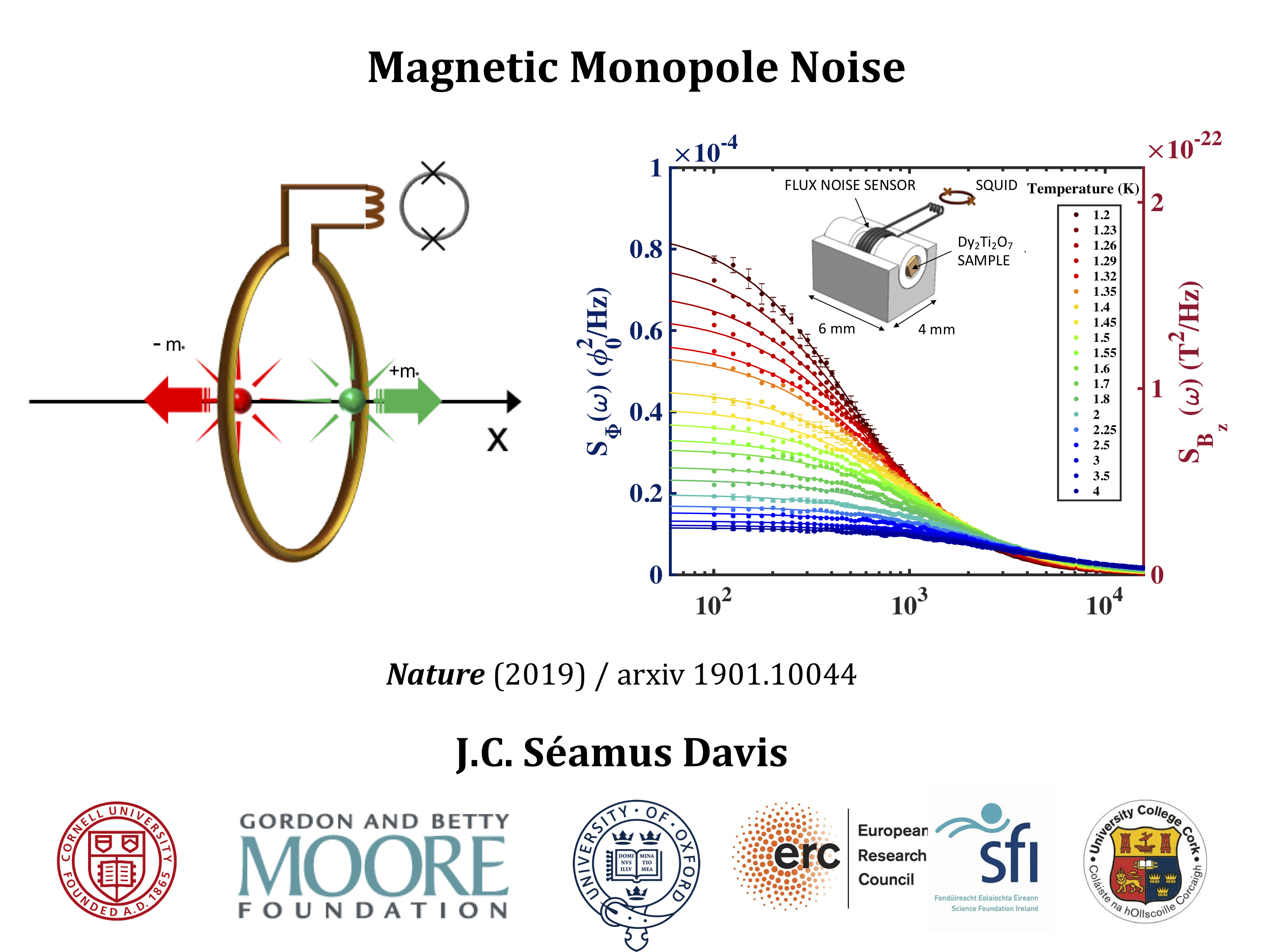Condensed Matter Seminar Series |
J.C. Séamus Davis
Magnetic Monopole Noise
Magnetic monopoles are hypothetical elementary particles exhibiting quantized magnetic charge and quantized magnetic flux . A classic proposal for detecting such magnetic charges is to measure the quantized jump in magnetic flux threading the loop of a superconducting quantum interference device (SQUID) when a monopole passes through it. Naturally, with the theoretical discovery that a plasma of emergent magnetic charges should exist in several lanthanide-pyrochlore magnetic insulators including Dy2Ti2O7, this SQUID technique was proposed for their direct detection (Nature 451, 42 (2008)). Experimentally, this has proven extremely challenging because of the high number density, and the generation-recombination (GR) fluctuations, of the monopole plasma. Recently, however, theoretical advances have allowed the spectral density of magnetic-flux noise due to GR fluctuations of magnetic charge pairs to be determined. In response, we developed a high-sensitivity, SQUID based flux-noise spectrometer, and used this new instrument to measure the frequency and temperature dependence of for Dy2Ti2O7 samples, and discovered the magnetic noise generated by a fluid of monopoles. R. Dusad et al Nature (2019) and https://arxiv.1901.10044.


